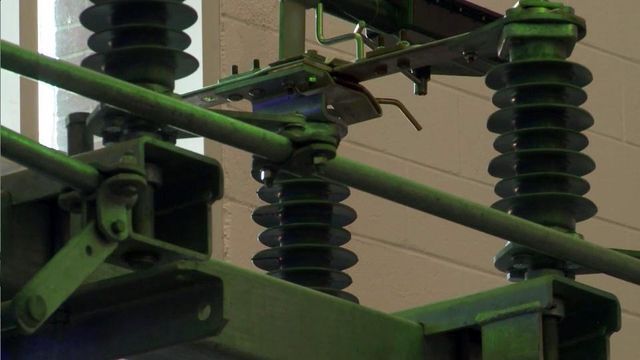More efficient semiconductors at heart of NCSU research effort
In announcing a $140 million effort to improve U.S. manufacturing efficiency on Wednesday, President Barack Obama had to give a crowd at North Carolina State University a quick overview on wide-bandgap semiconductors.
Posted — UpdatedThe next-generation devices are at the heart of the public-private effort that N.C. State will lead.
"I'm not sure I'm fully qualified to explain the technical elements of this. Raise your hand if you know what it is," Obama said, seeking help from engineering students in the crowd.
Semiconductors translate power into energy that devices from laptops to televisions to power substations can use. Most semiconductors are made of silicon, but they're not very efficient. They waste a lot of energy, mostly in the form of heat.
"We often lose up to 90 percent of the energy when we're doing transitions using silicon," said Terri Lomax, vice chancellor for research, innovation and economic development at N.C. State.
The new partnership, which includes five other universities and more than a dozen companies, will focus on so-called wide-bandgap semiconductors that control power better than silicon and lose much less of it. That means cellphone batteries can charge faster and last longer and laptops can be smaller and more efficient.
"It adds up, especially these days when semiconductors are in everything," Lomax said.
Most importantly, the new semiconductors can reduce the massive amounts of energy lost on the power grid.
"Right now, we're using technology from the 1920s, and so we put the electricity in at one end and it runs out the other end, what we don't use," Lomax said. "Imagine if we had the ability to have it not run out the other end but distribute it differently."
ABB, a global power technology company with a smart grid center on N.C. State's Centennial Campus, is one of the private-sector partners in the project. Division President Anders Sjoelin said the new materials will change the power grid.
"They can operate on higher temperature, producing less losses. We can go up in voltage. We'll need less components to do the same thing," Sjoelin said.
The materials used in the wide-bandgap semiconductors are more expensive than silicon, and the partners in the project are trying to identify new applications for them to make development of the microchips more cost-effective.
Having N.C. State in charge of the effort will make Raleigh the center for wide-bandgap technology and for developers looking for new ways to use it, he said, which could mean more technology jobs for the Triangle.
"I think it means a lot for the area," he said. "It's a great recognition for N.C. State, and we're really proud to be part of that."
• Credits
Copyright 2024 by Capitol Broadcasting Company. All rights reserved. This material may not be published, broadcast, rewritten or redistributed.






